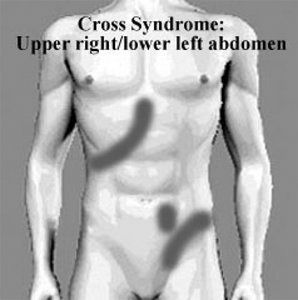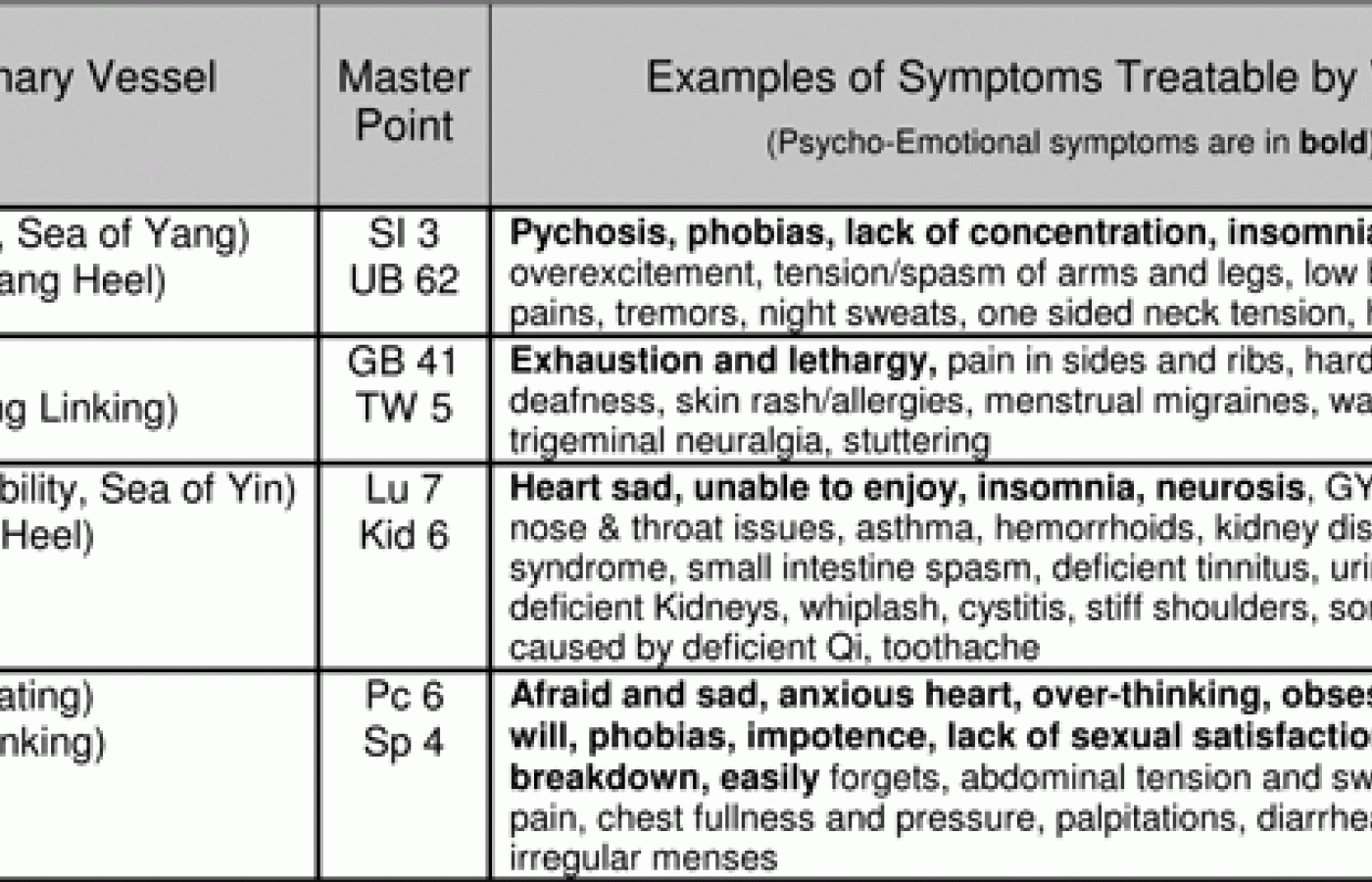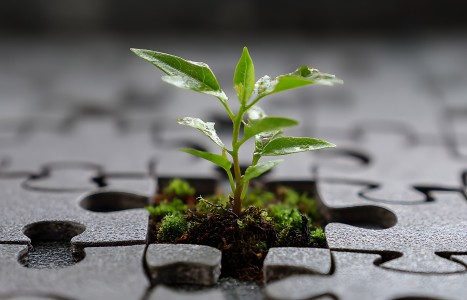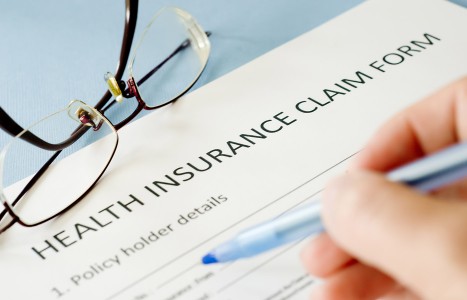When we talk about fertility, the focus is often placed on the ovaries and the uterus. Yet sperm-related factors contribute to nearly half of all cases of infertility. Whether someone is navigating fertility care alone or with a partner, and whether building a family through intercourse, IVI, IUI or IVF, it’s vital to include sperm health in the picture.
Extraordinary Vessels and Emotional Healing
In addition to the 12 primary Organ-related meridians in the body, there are other energy circulation channels that have been mapped out by Traditional Chinese Medicine. Probably the most significant of these are called the Eight Extraordinary (or Extra) Vessels. These have also been called the Eight Ancestral Meridians because they help to distribute source energies stored in the Kidneys throughout the body. For brevity I will refer to them as Extra vessels.
These eight vessels act as regulators of qi and Blood in the 12 primary meridians. When any of them become deficient in energy the Extra vessels can bring energy to supplement them. When any of the primary meridians become irritated by excessive energy the Extra vessels can help reduce the excess by re-directing it to other areas.
Each of the eight extra vessels can be treated through a specific Master acu-point. Each of these Master points exists on one of the primary meridians, so the manner in which you treat it, and your intention when you treat it, helps determine if it will mainly treat local issues of the meridian it is on, or work more on a systemic level through the Extra vessel system. The Eight Extra vessels are grouped in pairs, with the two vessels in each pair having complementary effects.
There are specific symptoms and conditions associated with imbalances of each of the Eight Extraordinary Vessels. These conditions can be treated by stimulating the associated Master point of the affected Extra vessel. In most cases results are enhanced by also treating the associated Master point of its paired Extra vessel.
In the Japanese acupuncture tradition Extra vessels are said to help correct distortions in the structural balance of the body. For example leg length imbalances can be treated through the Yangwei/Dai Master and Coupled pair.
While not used as often, treatment of Extra vessels can also effectively treat emotional imbalances. The following chart details these indications from various classics of Traditional Chinese Medicine. The bold indications are for psycho-emotional imbalances while the regular type is for physical complaints.
Eight Extraordinary Vessels

Please note that the symptoms listed in this chart represent only some of the conditions treatable by the Extra vessels. I have emphasized those that relate to psycho-emotional issues, and are most relevant to PNE Balancing. For a more complete treatment of the Eight Extra Vessels I refer you to the excellent book Extraordinary Vessels.
I frequently combine the treatment of Extra vessels with chakra balancing treatment (PNE Balancing). This is a method that utilizes color light therapy, microcurrent and sound toning, often in conjunction with applications of essential oils, to address emotional imbalances. These methods are powerfully synergistic when used together.
While creating the above chart I considered if I could add a column to give common correspondences between the Extra vessels and selection of PNE centers (chakras) for treatment. Although there are many powerful ways to combine their treatment I concluded that such a chart would be simplistic and misleading. Most of the psycho-emotional symptoms treatable by these master points could be expressed through dysfunction of several chakras. There is no substitute for actually testing the centers and letting the body reveal which need to be treated at any given time.
Here are some valuable clues, however, for putting together such combination therapies.
I have found that the following Master point combinations have come up over and over through meridian diagnosis while treating my patients:
1. Pc 6 and Sp 4: For patients with a wide range of emotional issues. These seem to have broad spectrum effects for various forms of depression, anxiety, post-traumatic stress, and obsessive thought patterns. These points are generally only treated on the right side of the body.

2. Pc 6 and Liv 3: For patients with most emotional complaints when Liver issues are a primary theme, such as anger, irritability, passive-aggressive behavior, nervous tension and many forms of chronic pain. Patients requiring this combination will show imbalanced readings of their Liver meridian/Organ and Pericardium (or other Fire element meridian) through pulse, abdominal or electronic meridian evaluation.
3. Pc 6 and Sp 4 on right side of body, TW 5 and GB 41 on left side: This is what the brilliant acupuncture physician Manaka called the "cross syndrome" treatment. Such patients will have tension in the Liver area under the right rib cage with tension in the lower left quadrant of the abdomen.
For all three of these patterns the most common associated PNE center imbalances I have seen have been some combination of the Sacral, Solar Plexus or Heart centers.
4. SI 3 and UB 62: For patients with depression associated with chronic back or other musculo-skeletal pain, and those with hyper-emotional symptoms and over-excitement. Most common PNE center imbalances: Root, Sacral or Solar Plexus.
5. Lu 7 and Kid 6: For patients with depression associated with longstanding fatigue, asthma, and who get sick easily. Most common PNE center imbalances: Sacral, Heart, Throat
6. TW 5 and GB 41: For patients with psycho-emotional disturbances accompanied by migraines and menstrual issues, sometimes also with sciatica or other pain issues. Most common PNE center imbalances: Sacral, Solar, Brow
Another way to match Extra vessel treatment to PNE/chakra balancing is by studying the classical indications for each. This takes more time, but can be gratifying when you see the associations. For example, here is one such observation from an article I wrote:
Many people who do not have overt diseases listed above tend to have low-grade feelings of unhappiness, fatigue or vague complaints that arise from an inner stalemate between their efforts to heal or uplift themselves and the underlying imbalances of the chakra. This includes many idealistic people who practice holistic health or spirituality.
Now let's take a look at some of the symptoms listed in classic texts of acupuncture for the Yin Wei extraordinary vessel:
- Congealed, stagnant qi, easily loses control, too much thinking, sad, pain in the heart and abdomen
- Forgetfulness, mental unclarity
- Deficiency in the heart, paranoid, shen and thinking are anxious
The Nan Jing states this relationship for the yin and yang wei vessels: "Yin and Yang cannot balance; the (visible) emotions will be thinking too much, obsession, loss of will and lack of self-control".
Many of the physical symptoms listed for the Yin Wei, such as "fullness and discomfort in the middle warmer, stagnation or lumps that will not disperse in the intestines, increasing congestion of food, arms are red and swollen" also parallel the diseases and symptoms associated with the Solar Plexus chakra.
There are certainly some strong parallels between the symptoms and functioning of the Solar Plexus and Yin Wei vessel. Both relate to disorders of deep emotions somatizing themselves in the abdominal organs and musculature, and holographically affecting the limbs and skin.
While these observations are offered as useful guidance I must emphasize that it is essential that you actually test the PNE centers to see which ones actually need balancing. While the above patterns come up over and over we are often surprised after testing to see which centers actually require treatment.
References
- Matsumoto and Birch, Extraordinary Vessels, Paradigm Publications 1986
- For a complete treatment of Manaka's work, see his book: Manaka and Birch, Chasing the Dragon's Tail, Paradigm Publications 1995
- This article The Yin Wei Mai and Solar Plexus Chakra Connection: A Valuable Understanding for Treatment of Modern Patients was published in Acupuncture Today July, 2007 (Vol. 08, Issue 07) edition, available on the acupuncture today.com columnist archives
- From the Zhen Jiu Da Cheng, as quoted in book Extraordinary Vessels by Matsumoto and Birch, Paradigm Publications 1986



